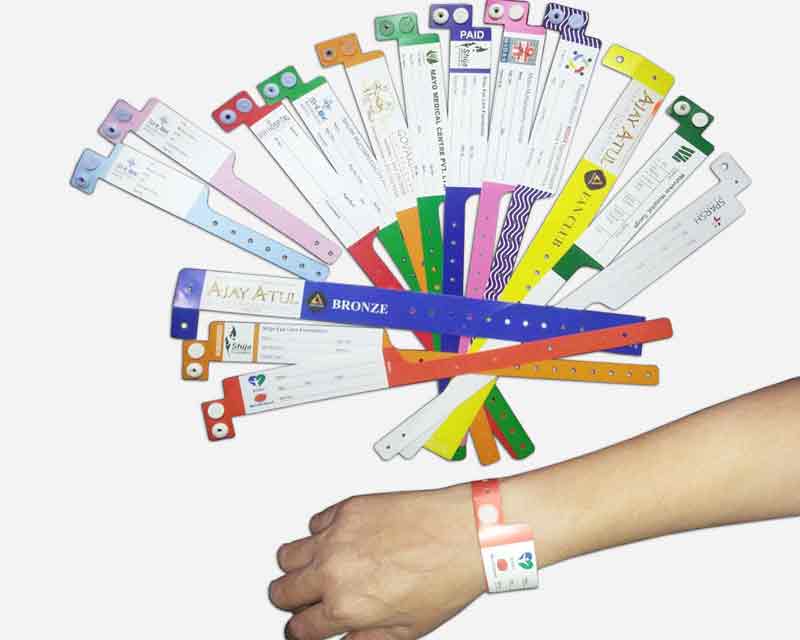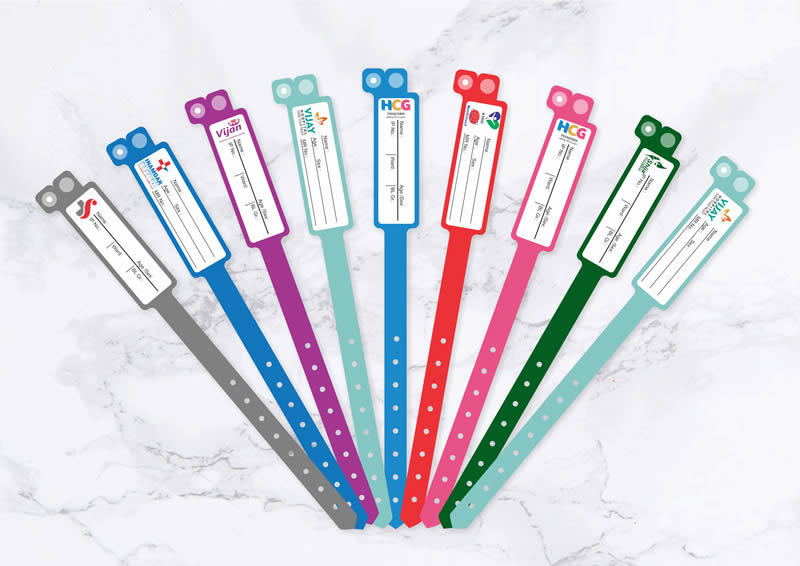Choosing the Right Materials for Your Patient Identification Band: A Step-by-Step Guide
Choosing the Right Materials for Your Patient Identification Band: A Step-by-Step Guide
Blog Article
Exploring the Numerous Sorts Of Patient Identification Band Used in Clinical Facilities
In the complex world of health care, the important function of Patient Identification bands typically goes unnoticed. These bands, differing from straightforward paper wristbands to advanced RFID bands, create the foundation of Patient security procedures, ensuring precision in Patient Identification.
Understanding the Significance of Patient Identification Bands
While they might seem like mere devices, Patient Identification bands play a crucial role in medical facilities. These bands work as an important device for confirming Patient identity, stopping clinical mistakes associated with misidentification. The bands normally display vital details such as the Patient's name, age, blood group, and any kind of well-known allergic reactions. They permit medical care specialists to rapidly access this critical information, thus facilitating prompt and exact medical treatment. Patient Identification bands also aid in simplifying administrative tasks, ensuring exact record-keeping and billing. In spite of their simplicity, these bands personify the concept of Patient security, a foundation of high quality wellness treatment. Without them, the risk of clinical mistakes, and consequently, Patient injury, could significantly increase.
Standard Paper Wristbands: Their Usage and Limitations
Standard paper wristbands have actually been a staple in Patient Identification across various medical facilities. While their use is widespread, they harbor particular restrictions that might influence their performance in Patient monitoring. This area will certainly concentrate on the scope of their application and the inherent downsides connected with their use.
Paper Wristbands: Use Extent
In the world of Patient Identification, paper wristbands have actually long held a critical function. These bands are usually utilized in outpatient settings, where the Patient's stay is momentary. The wristbands include crucial information such as the Patient's name, day of birth, and a distinct Identification number. This simple, yet efficient system, enables doctor to rapidly and precisely recognize patients, making certain the proper treatment is provided. Paper wristbands are additionally utilized in emergency situation scenarios, where fast Identification is extremely important. Their use encompasses occasions like blood donation drives and mass inoculation programs, better emphasizing their adaptability. In spite of developments in modern technology, the humble paper wristband remains a reputable and affordable service for Patient Identification in different medical care situations.
Limitations of Paper Wristbands
In spite of their prevalent usage, paper wristbands are not without their disadvantages. In addition, paper wristbands commonly do not have the technological capacities of even more modern options, such as barcoding or RFID chips, limiting their performance to simply displaying created info. Paper wristbands can create discomfort or skin irritation to some clients, especially when worn for extensive periods.
Barcoded Wristbands: Advancements in Patient Identification
While Patient Identification has long been an important aspect of health care, the advent of barcoded wristbands indicates a considerable jump forward. These bands utilize the simpleness of barcoding technology, enabling for Patient information to be rapidly checked and accessed. They improve the rate and accuracy of Patient Identification, minimizing the risk of medical errors connected to misidentification. Barcoded wristbands are cost-efficient, simple to create, and get rid of handwriting errors usual with hands-on systems. They are not without restrictions. While they offer improvements over conventional bands, the barcode can end up being smudged or worn, rendering it unreadable. In spite of this, barcoded wristbands continue to be a necessary device in modern health care setups, symbolizing the junction of technology and Patient care.
Superhigh Frequency Identification (RFID) Bands: an Action Towards Futuristic Healthcare
The development of Patient Identification bands has produced the introduction of Radio Frequency Identification (RFID) Bands (patient identification band). These ingenious tools existing key advantages for health care centers, providing a more reliable and have a peek at this website technically advanced means of Patient Identification. The execution of RFID in medical care is a significant action in the direction of an extra advanced technique to Patient monitoring and security
Understanding RFID Bands

RFID Bands: Trick Benefits
Welcoming a future where innovation and health care combine, superhigh frequency Identification bands offer several vital benefits. Mostly, these bands improve Patient safety and security by supplying exact, instantaneous Identification, consequently lowering medical mistakes. RFID bands can save a large quantity of Patient data, consisting of case history and allergic reactions, allowing customized care. They additionally enhance administrative jobs, as the automated information entry changes hand-operated processes, boosting effectiveness and reducing documentation. RFID bands use real-time monitoring of clients, crucial in high-risk atmospheres such as surgery or extensive treatment. These bands are long lasting and resistant to environmental variables, guaranteeing regular functionality. On the whole, RFID bands stand for a substantial advancement in Patient Identification innovation, profiting both clients and doctor.
Applying RFID in Health Care
As we enter a technically innovative era, the implementation of RFID bands in health care becomes progressively important. These bands provide a smooth method to track and identify patients, guaranteeing their security and boosting performance in therapy procedures. RFID bands provide numerous benefits over conventional Identification methods. They can keep a substantial quantity of information, including the Patient's clinical history and therapy plans, which can be conveniently accessed by medical care carriers. This data assists physicians make informed choices relating site to the Patient's treatment strategy. Additionally, RFID bands lower medical mistakes by providing accurate Patient Identification, which is essential in avoiding misdiagnosis or incorrect medication management. Thus, the implementation of RFID bands is a significant step in the direction of enhancing Patient safety and medical care shipment.

Color-Coded Wristbands: Assisting in Quick and Accurate Diagnosis
In the busy environment of a medical center, color-coded wristbands have actually become vital devices for swift and exact Identification of a patient's clinical condition. These wristbands, used by clients, lug particular shades that match to different medical conditions or conditions. For example, red could show allergy dangers, while yellow might symbolize an autumn danger. This system is created to provide instant visual signs to doctor, improving Patient security and care quality. In emergency situation scenarios, making use of these wristbands enables rapid decision-making. Nevertheless, the effectiveness of color-coded wristbands relies on the harmony of shade interpretation across health care establishments, requiring typical criteria for consistent application.
Approaches for Reliable Application and Monitoring of Patient ID Bands
Attaining optimum usage of Patient Identification bands requires a well-structured strategy for their application and administration. Patient education is likewise important; individuals should recognize the objective of the bands and the need for their continuous wear. It's essential to have a back-up plan in location, such as barcode scanning or biometrics, to ensure that Patient Identification is never endangered.
Final thought
Patient Identification bands are essential in medical facilities to ensure security and precision. Conventional paper, barcoded, RFID, and color-coded wristbands each hold distinct advantages, varying from cost-effectiveness to advanced information storage space and immediate medical alerts. Effective the original source execution and management of these bands can substantially reduce clinical errors, increase efficiency, and enhance overall Patient treatment. Therefore, understanding and utilizing these Identification devices is critical for preserving high standards in healthcare.
These bands, varying from straightforward paper wristbands to sophisticated RFID bands, create the backbone of Patient security methods, making sure precision in Patient Identification.The advancement of Patient Identification bands has actually brought concerning the appearance of Radio Frequency Identification (RFID) Bands. On the whole, RFID bands stand for a significant innovation in Patient Identification innovation, benefiting both clients and healthcare providers.
RFID bands decrease medical errors by giving precise Patient Identification, which is important in stopping misdiagnosis or incorrect medicine management. Patient education is likewise essential; people need to understand the function of the bands and the need for their continuous wear.
Report this page